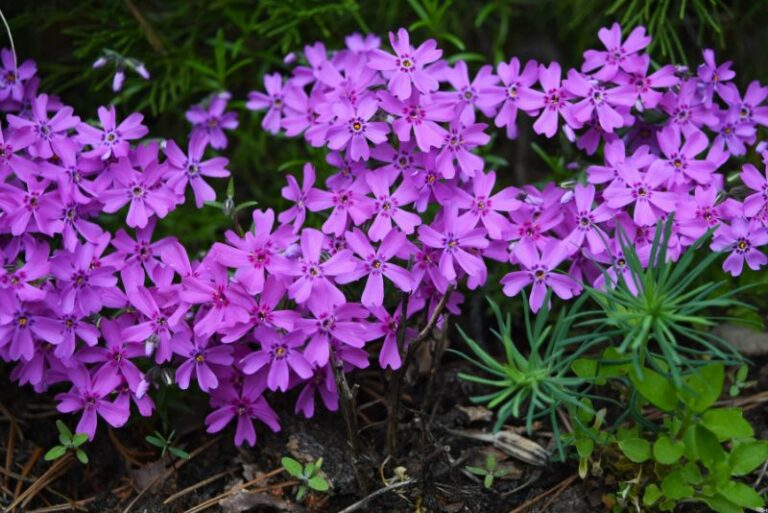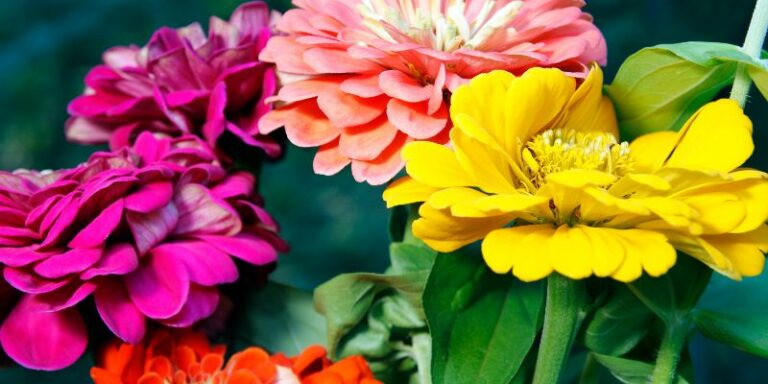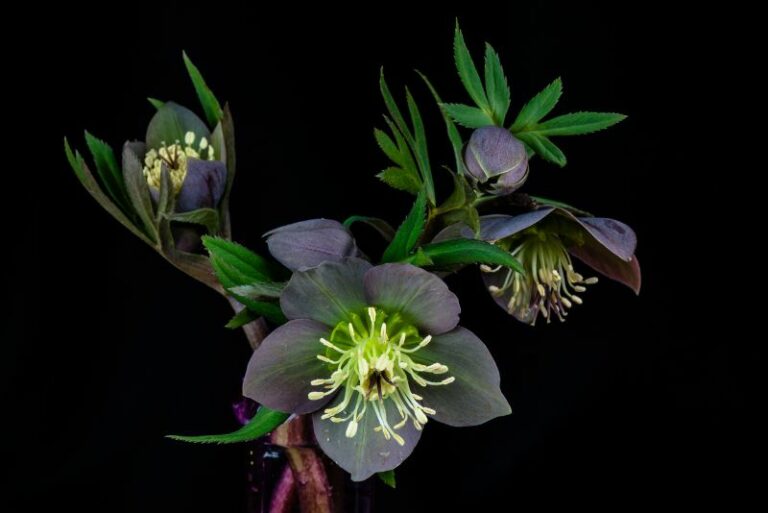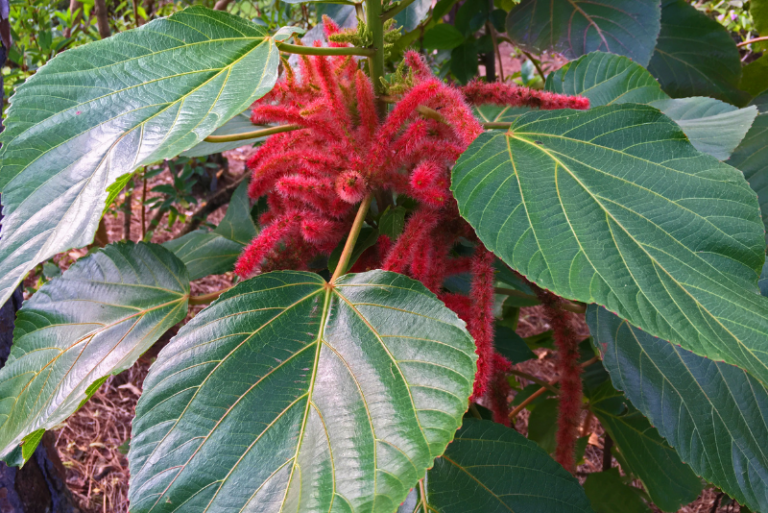Tansy Plant: Why You’ll Love These Flowers
Attention all flower lovers! Are you tired of the same old roses and daisies taking up space in your garden? Well, fret no more because we have a delightful surprise for you: the Tansy Plant! Trust us when we say, these flowers are not your average blooming beauties. With their vibrant hues, unique shape, and captivating fragrance, Tansy Plants are the ultimate game-changers in the world of gardening.
Get ready to fall head over heels for these charismatic blossoms that are sure to turn your garden into a whimsical wonderland.
So, if you’re ready to unleash your inner flower enthusiast and explore the endless possibilities of the Tansy Plant, keep reading, because we’re about to unveil all the reasons why you’ll absolutely adore these extraordinary flowers.
Tansy Plant Overview
| Features | Description |
|---|---|
| Common Name(s) | Tansy, Common Tansy, Golden Buttons |
| Scientific Name | Tanacetum vulgare |
| Family | Asteraceae |
| Height | Up to 1-1.5 meters (3-5 feet) |
| Light | Full sun to partial shade |
| Water | Moderate |
| Soil | Well-drained, can tolerate poor soil |
| Fertilizer | Generally not required |
| Pests and Diseases | Aphids, powdery mildew, rust |
Note: Tansy is a hardy perennial herb that’s native to Europe and Asia. It’s known for its distinctive, button-like yellow flowers and aromatic, fern-like foliage. While it’s attractive and has been used in traditional medicine, it’s also considered invasive in some areas and toxic if consumed in large quantities.
All About Tansy Plant
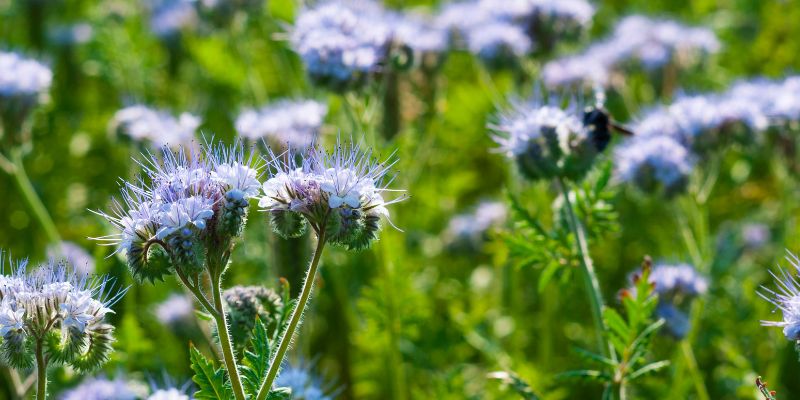
The Tansy plant, known scientifically as Tanacetum vulgare, is a perennial herb native to temperate Europe and Asia. It features compound, button-like yellow flowers and has fern-like leaves, giving it a distinct appearance. Traditionally, Tansy has been used in various medicinal applications due to its potent properties.
Tansy is known for its active compound called thujone, which can be toxic if consumed in large amounts. However, in controlled doses, it has been used to treat ailments such as migraines, rheumatism, fever, and digestive issues.
In terms of cultivation, Tansy prefers well-drained soil and can thrive in both full sun and partial shade. It’s a hardy plant that requires little maintenance, making it an attractive option for novice gardeners.
Besides its medicinal uses, Tansy has been employed in culinary applications. Its bitter leaves were used to flavor puddings and omelettes in the past, while the plant’s strong scent was also utilized as a natural insect repellent.
In modern times, Tansy is primarily grown for ornamental purposes. Its vibrant yellow flowers add a pop of color to the garden, and the plant’s resilience makes it a popular choice among landscape designers. Despite its toxicity, the Tansy plant continues to be of interest due to its historical, medicinal, and ornamental roles.
Varieties of Tansy Plant
The Tansy plant has several varieties, each with its unique characteristics. Some of the most popular varieties include:
Common Tansy (Tanacetum vulgare)
Common Tansy, or Tanacetum vulgare, is the most widely known variety of Tansy, native to Europe and Asia. Historically, it was used for medicinal and culinary purposes. It is recognized by its button-like yellow flowers and fern-like leaves. It has a strong, camphor-like scent, and while similar in appearance to other Tansy varieties, Common Tansy can be identified by its distinct, pungent odor.
Silver Tansy (Tanacetum argenteum)
Silver Tansy, or Tanacetum argenteum, is native to the Mediterranean region. It’s admired for its silvery, fern-like leaves and compact growth habit, making it an attractive choice for rock gardens and borders. Unlike Common Tansy, it has a milder scent and its flowers are white or silver rather than yellow.
Tansy ‘Isla Gold’ (Tanacetum vulgare ‘Isla Gold’)
The ‘Isla Gold’ variety of Tansy is a cultivar of the Common Tansy and is valued for its bright golden foliage. This variety has a less intense scent than its parent and shares the yellow, button-like flowers. It’s primarily grown for its vibrant and colorful leaves which set it apart from other Tansy plants.
Feverfew (Tanacetum parthenium)
Despite its different appearance, Feverfew is a member of the Tansy family. It’s native to southeastern Europe but is now found worldwide. Historically, it was used to treat fevers, headaches, and arthritis. Feverfew is distinct with its daisy-like flowers and citrus-scented leaves, setting it apart from other Tansy varieties.
Each Tansy variety has its unique characteristics, yet all share a common ability to thrive in various conditions and add beauty to any garden. Their historical significance and ongoing interest make them a compelling subject for any garden enthusiast.
Tansy Plant Care Procedures
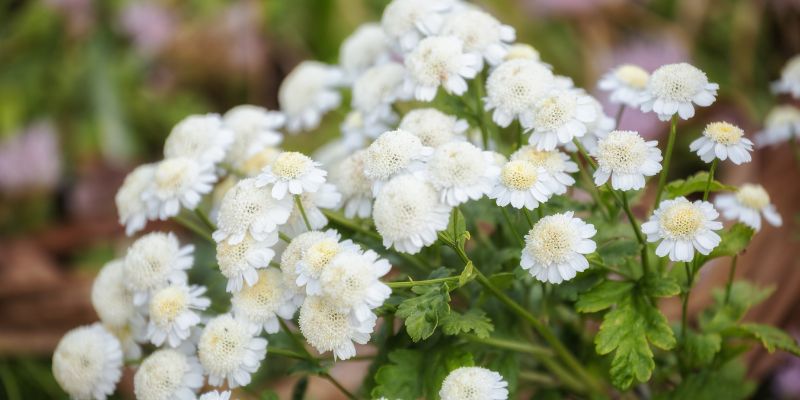
As mentioned, Tansy is a resilient plant that requires minimal care. However, to ensure proper growth and longevity of the plant, here are some essential care procedures to keep in mind:
Light and Temperature
Tansy plants are known for their adaptability and can thrive in a range of light conditions. However, for optimal growth and flowering, they prefer full sun exposure. If planting Tansy in a part of your garden that is partially shaded, ensure it gets at least 4 to 6 hours of sunlight daily. On the other hand, if the plant is placed in a region with intense sunlight, some afternoon shade can be beneficial to prevent the foliage from scorched.
As for temperature, Tansy plants are hardy and can tolerate a wide range of temperatures. They are resistant to frost and can survive in colder climates, making them suitable for regions with harsh winters. However, they flourish best in temperate conditions. Extreme heat, especially when coupled with low humidity, can be detrimental to the plant. Therefore, if you live in a region with hot summers, ensure the plant is watered adequately and consider providing some shade during the peak hours of sunlight to prevent heat stress.
Water and Humidity
In terms of watering, Tansy plants are quite forgiving and can tolerate a bit of neglect. They are highly resistant to drought, making them ideal for regions with low annual rainfall. However, for optimal growth, it is advisable to water the plant regularly, especially during dry periods. Keep the soil evenly moist but never waterlogged. Overwatering can lead to root rot, a common issue that can be detrimental to the plant’s health.
The frequency of watering will largely depend on the climate and soil type. In a hot and dry climate, you may need to water your Tansy plant more often, while in cooler or humid conditions, the plant will require less frequent watering. A good rule of thumb is to water the plant when the top inch of soil feels dry to the touch.
As for humidity, Tansy plants can tolerate a wide range of humidity levels. They can thrive in both dry and humid climates, making them an adaptable choice for different geographical locations. However, in extremely hot and dry conditions, the plant may benefit from occasional misting to increase humidity and prevent the leaves from drying out. But be cautious not to overdo it, as excessive humidity can lead to fungal diseases.
In conclusion, while Tansy plants are hardy and require minimal care, a well-judged watering routine and understanding of the plant’s humidity requirements can ensure the plant’s optimal health and growth.
Soil Type and pH
Tansy plants are adaptable to a variety of soil types. However, for optimal growth and health, they prefer well-drained soil. Sandy or loamy soils are ideal because they allow for good drainage, reducing the risk of root rot caused by waterlogged conditions.
Tansy plants can also adapt to clay soils, as long as there is sufficient drainage. If your garden has heavy clay soil, consider amending it with organic matter or sand to improve its drainage capabilities.
In terms of pH, Tansy plants are quite tolerant and can grow in slightly acidic to slightly alkaline soil. However, they tend to prefer neutral to slightly acidic conditions. A soil pH between 6.0 and 7.0 is ideal for these plants.
It’s a good idea to test your soil’s pH before planting Tansy. If the pH is too high (alkaline), you can lower it by adding elements like sulfur or peat moss. If the pH is too low (acidic), you can raise it by adding lime or wood ash.
Preparing the Soil
Proper soil preparation can be the key to successful Tansy cultivation. Here’s a step-by-step guide on how to prepare your soil:
- Test the Soil: The first step is to get an understanding of your current soil conditions. You can buy a soil testing kit from a local nursery or online, which will tell you the soil type and pH. This information will help you determine what amendments, if any, your soil needs.
- Clear the Planting Area: Clear the area where you plan to grow your Tansy plants. Remove any weeds, stones, or other debris.
- Amend the Soil: If your soil is not well-draining, amend it with organic matter like compost or well-rotted manure. These amendments can also add nutrients to the soil, promoting healthy plant growth. If your soil is clayey, consider adding some sand to improve drainage.
- Adjust the pH: Based on your soil test results, adjust your soil pH if necessary. Add lime to raise the pH or sulfur to lower it. Follow the package instructions for the correct quantities to use.
- Mix the Amendments: Thoroughly mix the amendments into the top 12-18 inches of soil. This helps evenly distribute the nutrients and ensures proper drainage.
- Moisture Level: Water the soil to a proper moisture level. It should be moist but not waterlogged. Remember that Tansy plants prefer well-drained soil.
With these steps, your soil will be well-prepared for planting Tansy, helping ensure the health and longevity of your plants.
Fertilizer
While Tansy plants generally don’t require heavy fertilization, an appropriate feeding schedule can bolster their growth and flowering. Using an all-purpose, slow-release fertilizer will provide them with the essential nutrients they need. Here’s a step-by-step guide on proper fertilization for Tansy plants:
- Identify the Need: Assess your plant’s growth and overall health. If your Tansy appears stunted or its leaf color is pale, it might benefit from supplemental fertilization.
- Select the Right Fertilizer: Choose a balanced, all-purpose fertilizer. A 10-10-10 or 14-14-14 formulation (indicating equal proportions of nitrogen, phosphorus, and potassium) would be a suitable choice. Slow-release granular formulas are preferable as they provide a steady nutrient supply over a longer period.
- Application: Apply the fertilizer to the soil around your Tansy plant in early spring, just as new growth starts to appear. Avoid sprinkling it directly on the plant to prevent burns.
- Frequency: Repeat the application once every four to six weeks during the growing season (spring through early fall). However, be careful not to over-fertilize, as this can cause foliage burns or excessive leaf growth at the expense of flowers.
- Watering: Water the plant thoroughly after applying the fertilizer. This helps distribute the nutrients evenly throughout the soil and enables them to be better absorbed by the plant’s roots.
- Monitor: Keep an eye on your plant’s response to the fertilization. If the growth improves and the leaves attain a healthy green color, continue with your fertilizing routine. If not, consider adjusting the fertilizer type or application rate.
Tansy plants, with their hardy nature, are typically low-maintenance. However, they will respond well to a proper care routine, including a well-judged fertilization regimen.
Repotting Tansy Plants
Repotting is a crucial part of Tansy plant care, particularly if you are growing them in containers. Plants outgrow their pots over time, and repotting ensures they have enough space for root development, along with fresh soil for nutrition. Here’s a step-by-step guide on how to repot Tansy plants:
- Select the Right Time: The best time to repot Tansy plants is in the early spring, just before the plant starts its new growth cycle. This gives the plant enough time to recover from the stress of repotting before it starts its vigorous growth.
- Choose the Right Pot: When choosing a new pot, make sure it is only one or two sizes larger than the current pot. It should have good drainage holes to prevent waterlogging.
- Prepare the New Pot: Place a layer of fresh, well-draining potting soil at the bottom of the new pot. This acts as a base for the plant.
- Remove the Plant: Carefully remove the Tansy plant from its current pot. Try to keep the root ball as intact as possible. If the plant is root-bound (i.e., the roots are tightly wrapped in a circle), gently tease them apart before repotting.
- Place the Plant: Position your Tansy plant in the new pot. The top of the root ball should be at the same level as the rim of the pot. Add or remove soil as needed to achieve this height.
- Fill the Pot: Fill in the space around the root ball with potting soil, pressing down lightly to remove any air pockets. Leave about an inch of space from the soil surface to the rim of the pot for watering.
- Watering: Once repotted, water your Tansy plant thoroughly. This helps settle the soil around the roots and establish the plant in its new pot.
- Aftercare: Place the repotted Tansy in a location with the appropriate light exposure. Monitor the plant over the next few weeks and water as necessary. It may take some time for the plant to adjust to its new pot, but with proper care, it should continue to thrive.
Remember, repotting shouldn’t be done too frequently, as this can stress the plant. Only repot when the Tansy plant has outgrown its current pot or the soil has become depleted of nutrients.
Tansy Plant Propagation
Propagation is a cost-effective and engaging method of multiplying your Tansy plants. There are three main ways you can propagate Tansy: by division, from cuttings, or from seeds. Here’s a detailed guide on each method:
Division
This method is hinted at in the repotting segment above, as it typically occurs when a plant has outgrown its container.
- Choose the Right Time: The best time to divide your Tansy plant is in early spring before the new growth starts. This allows the plant enough time to recover before it begins the growth cycle.
- Prepare: Carefully remove the Tansy plant from its pot, keeping the root ball as intact as possible.
- Divide: Using a clean, sharp knife, divide the root ball into sections. Each section should have at least one shoot and a healthy section of roots.
- Plant: Plant each division into a prepared pot with fresh, well-draining soil.
- Care: Water thoroughly after planting and place in a location with appropriate light exposure. Regularly monitor your new plants and provide care as needed.
Cuttings
This method involves taking a portion of the plant’s stem and encouraging it to root.
- Select Stem: In early summer, select a healthy, vigorous stem from your Tansy plant and cut a 4-6 inch section, ensuring it includes at least two nodes (points where leaves attach).
- Prepare Cutting: Remove the leaves from the bottom half of the cutting to expose the nodes, as these are where roots will form.
- Rooting Medium: Insert the cut end into a pot filled with a moist, well-draining rooting medium, such as a soilless potting mix or sand.
- Care: Place the pot in a location with bright, indirect light and keep the medium moist until roots develop, which usually occurs within a few weeks. After that, care for the cutting as you would for a mature Tansy plant.
Seeds
Growing Tansy from seeds is a longer process, but it can be rewarding.
- Planting Time: Plant Tansy seeds indoors in late winter, or directly in the garden in early spring or fall.
- Preparing the Seeds: Before planting, soak the seeds in water for 24 hours to enhance germination.
- Sowing: Sow the seeds on the surface of a seed-starting mix and lightly cover them with additional soil.
- Germination: Place in a warm location with plenty of light. Keep the soil moist but not waterlogged. Germination usually occurs in 2-3 weeks.
- Transplanting: Once the seedlings have developed their first set of true leaves, they can be transplanted to individual pots or a suitable location in the garden.
Remember, regardless of the propagation method you choose, patience is key. All methods take time for the new Tansy plants to establish and grow.
Tansy Plant Pruning
Pruning is a crucial part of Tansy plant care, helping to maintain the plant’s health and promote lush, vigorous growth. Here’s a step-by-step guide on how to effectively prune Tansy plants:
- Choose the Right Time: The best time to prune Tansy plants is in late winter or early spring before the plant starts producing new growth.
- Prepare Your Tools: Use a pair of sharp pruning shears or a sharp knife. Make sure your tools are clean to minimize the risk of transmitting diseases to the plant.
- Identify the Stems: Look for old, woody stems that produced flowers the previous year. These stems are unlikely to flower again and can be removed to encourage new growth.
- Cutting Method: Cut the stems back to about 3 inches from the ground. Make sure to make your cuts at a 45-degree angle to promote water runoff and prevent disease.
- Thin the Plant: If your Tansy plant is very dense, you may want to thin it out. This involves removing some of the stems in the center of the plant to improve air circulation and reduce the risk of disease.
- Dispose of Debris: Always clean up and dispose of the cut stems properly. Leaving them on the ground can attract pests and disease.
- Aftercare: After pruning, water the plant thoroughly. Monitor the plant over the next few weeks and water as necessary.
Regular pruning helps Tansy plants grow more vigorously, produce more flowers, and reduces the risk of disease. Remember to always prune with care, never removing more than one-third of the plant at once to avoid stressing the plant.
Tansy Plant Troubleshooting
In this section, we’ll delve into some of the problems you might encounter while growing Tansy plants. Remember that no plant is entirely free of challenges – what matters is how well you identify and manage them.
Growing Problems
- Poor Germination: If your Tansy seeds are not germinating effectively, it may be due to inadequate light, temperature, or moisture levels. Ensure they’re in a warm location with plenty of light and keep the soil consistently moist, but not waterlogged.
- Stunted Growth: A Tansy plant may exhibit stunted growth if it’s not getting adequate sunlight or if the soil lacks essential nutrients. Consider moving the plant to a sunnier location or enriching the soil with a balanced, slow-release fertilizer.
Pests
- Aphids: These small, sap-sucking insects can cause the leaves to curl and the plant to become weak. Use an insecticidal soap or introduce natural predators like ladybugs to control the aphid population.
- Caterpillars: Caterpillars can chew large holes in the leaves of the Tansy plant. Handpick these pests when seen, or use a natural pesticide like Bacillus thuringiensis.
Diseases
- Powdery Mildew: This fungus appears as a white, powdery substance on the leaves. It can be controlled by improving air circulation around the plant and applying a fungicide if necessary.
- Root Rot: Overwatering can lead to root rot, a condition that turns roots mushy and brown. Prevent this by ensuring your Tansy plant is planted in well-draining soil and avoid overwatering.
Remember, early detection is vital in managing these issues. Regularly check your Tansy plant for any signs of pests or diseases, and act promptly if you notice anything unusual. With the right care and attention, your Tansy plants can thrive and continue to add beauty to your garden.
Frequently Asked Questions about Tansy Plants
1. Is Tansy plant toxic to pets?
Yes, Tansy plants contain compounds that can be harmful if ingested by pets. It’s best to keep these plants out of reach of cats, dogs, and other pets.
2. Can Tansy plants grow in shade?
Tansy plants prefer full sun to partial shade. While they can tolerate some shade, they will not flower as prolifically in deeply shaded areas.
3. How often should I water my Tansy plant?
Tansy plants are quite drought-tolerant once established. Water them regularly until they’re well-established, then reduce watering. Always allow the soil to dry out between waterings to prevent root rot.
4. Are Tansy plants invasive?
Yes, Tansy plants can be invasive in some areas. They spread both by seeds and by underground rhizomes, which can make them difficult to control.
5. Can I grow Tansy plants indoors?
Tansy plants can be grown indoors, but they require plenty of light and might not flower as prolifically. Ensure they’re placed near a bright window and receive adequate airflow.

